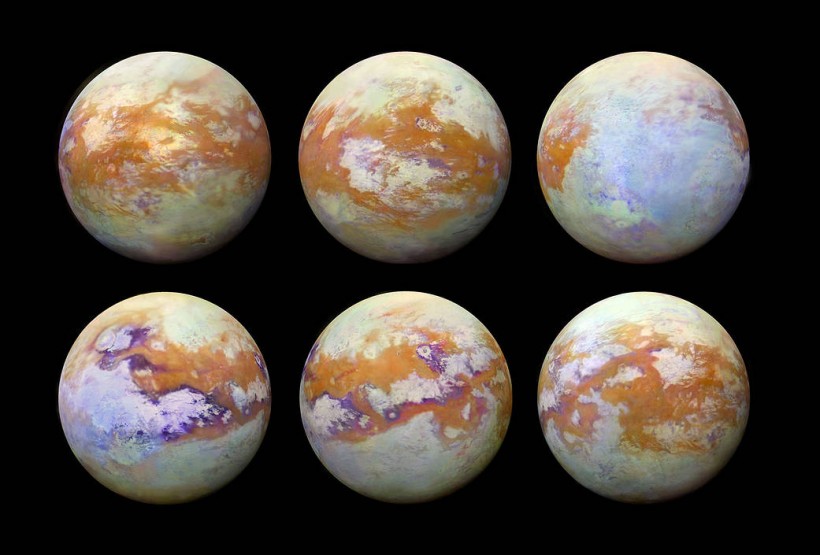NASA's Dragonfly rotorcraft will arrive in the Selk Crater region of Saturn's moon Titan in 2034. By analyzing radar photos of the area that the Cassini spacecraft collected during its 13 years of investigating the Saturn system, scientists have described the geography of this area. It is, in essence, a patchwork of ice and sand dunes.
NASA Titan Dragonfly Spacecraft to Examine Saturn Moon
According to NASA, Titan is the perfect place to research astrobiology, prebiological chemistry, and the viability of alien life. This is due to the fact that it is an ocean world with carbon-rich chemistry where water and ice predominate. The moon features rivers, lakes, and a subterranean ocean of liquid water in addition to lakes and lakes of methane. Additionally, there are rai, methane clouds, and an atmosphere that enables Dragonfly to fly.
The Dragonfly mission from NASA will touch down on Saturn's largest moon in the midst of dunes and ice-broken bedrock.
In 2034, Titan will be reached by the 2027-born rotorcraft Dragonfly, which will thereafter perform airborne investigations of the planet. According to NASA, the range of a wheeled rover is far smaller than that of a Dragonfly, which will be able to go around 10 miles (16 kilometers) on each trip in a half-hour. Over the duration of its two-year mission, it will explore an area with a breadth of hundreds of miles or kilometers.
Before Dragonfly can take to the skies on its own, it must first soft-land on Titan beneath a parachute, on the frozen ground hidden from plain view by the dense hydrocarbon fog surrounding the moon's atmosphere.

These six infrared images of Saturn's moon Titan represent some of the clearest, most seamless-looking global views of the icy moon's surface. The views were created using 13 years of data acquired by the Visual and Infrared Mapping Spectrometer (VIMS) instrument onboard NASA's Cassini spacecraft. The images result from a focused effort to smoothly combine data from the multitude of different observations VIMS made under a wide variety of lighting and viewing conditions over the course of Cassini's mission.
ALSO READ: NASA's Nuclear-Powered Dragonfly Helicopter to See Saturn's Biggest Moon 'Titan'
Why NASA Chose The Dune Region
Dragonfly will touch down in the Shangri-La dune region, close to the 50-mile-wide (80-kilometer) crater, Selk. Space.com said the photos of this region collected by NASA's Cassini spacecraft between 2004 and 2017 had been reexamined by a team of scientists led by planetary scientist Léa Bonnefoy of Cornell University. The findings offer the most accurate evaluation of the potential landing site for Dragonfly to date.
According to a statement from Bonnefoy, "Dragonfly is headed to a scientifically outstanding location."
On Titan, Dragonfly will land in a dry, tropical region. Although there are sporadic liquid methane showers, the atmosphere is more analogous to an Earth desert with dunes, a few minor mountains, and an impact crater.
Selk is an intriguing location. The impact that removed it would have melted the nearby ice, generating interactions between the organic molecules in the hydrocarbon soup on Titan's surface and the fresh liquid water, given that the geological age of the area is just a few hundred million years. Astrobiologists are particularly interested in prebiotic chemistry, or chemistry containing carbon-rich molecules but not mediated by living organisms.
However, the greatest resolution for the region's radar images taken by Cassini is just 1,000 feet (300 meters) per pixel. According to Bonnefoy, the researchers probably overlooked several little rivers and picturesque areas.
The Planetary Science Journal published the study that the researchers conducted.
Researchers published their study in The Planetary Science Journal.
RELATED ARTICLE: Moon Could Have Formed Right After a 'Cataclysmic' Impact; Supercomputer Simulation Shows Details of the Lunar Formation
Check out more news and information on Space in Science Times.














